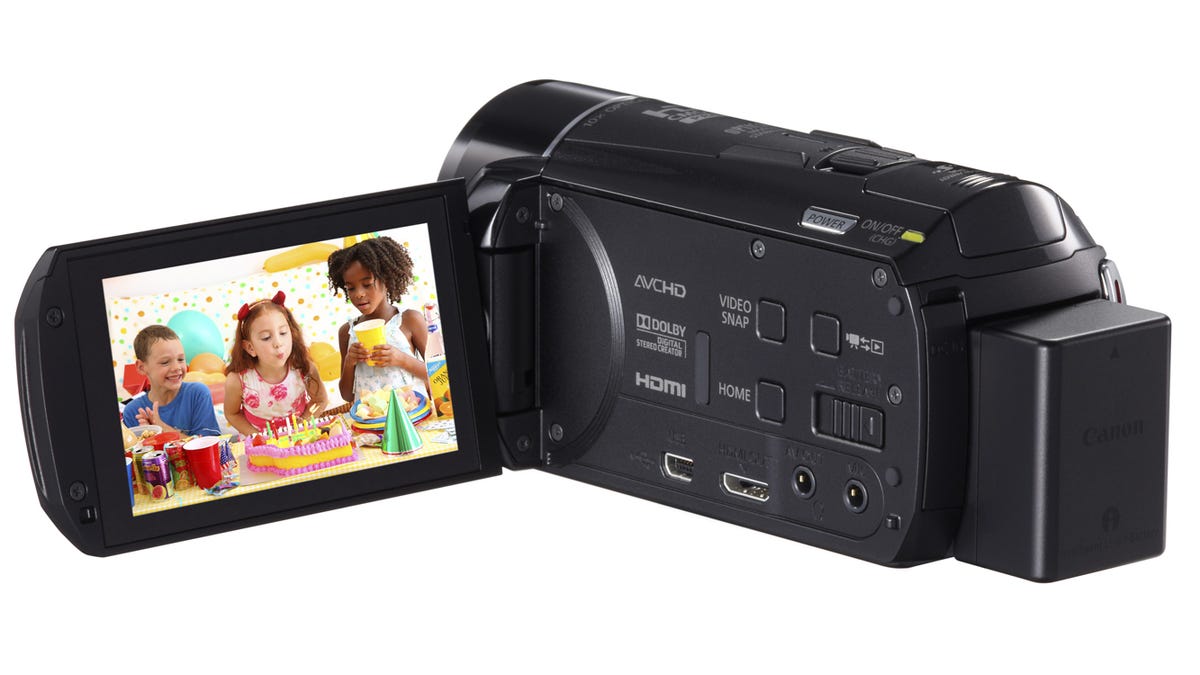Canon camcorders stay the course at CES 2012
Other than adding Wi-Fi, Canon's consumer camcorders offer subtle updates rather than showy new features.

LAS VEGAS--Canon's consumer camcorders for 2012 make for boring news, but will probably be pretty good products.
Compared with the whizzy C300 debut, any subsequent consumer camcorder announcements from Canon are bound to be pretty dull. Luckily for Canon, the updates to its 2012 camcorder line look like a decent set of upgrades that will improve on already solid products.
Certain things haven't changed since their debut a year ago. The G10 continues at the top of the prosumer line without replacement, and Canon didn't mention the HF S30 at all during our briefing. The company instead concentrates on revving the mainstream HF M series and entry-level HF R series, streamlining the interface, adding Wi-Fi, and in the case of the M models, claiming improvements in the low-light video quality.
For the M series, Canon has refined the microlenses and color filters on the sensor, and says it delivers 20 percent better low-light performance--down to 1.2 lux from 1.5 lux. In fact, Canon claims the new models will outperform the G10 in low light. Though they use the same 10x zoom lens as their predecessors, the M models are smaller than before. Sadly, though, Canon has jettisoned the EVF from the top-end model, despite it being more expensive than the M41 it replaces.
Given how much I've complained about the touch-screen user interface for the recent generations of Canon's camcorders, it was nice to see that it's been greatly streamlined, tossing the poorly placed inner scroll bar for more icon-driven operation. It's coupled with a new, more responsive 3-inch LCD and navigation controls.
Canon has also introduced some more automation in the audio controls, with audio preset options (such as music or speech). Plus the Story Creator now offers more-specific tips.
For both the R and M series, models with built-in memory will also have Wi-Fi. There will be an iOS app for streaming or storing footage on a mobile device. (According to Canon, "building on Android is a little difficult.") Canon will also offer an image gateway server for uploading via an access point, and support DLNA for wireless transmission to a TV, though the latter only for MPEG-4 files (720/30p or 24p). Also, there'll be direct-to-disk archiving for memory-equipped models.
The R series gets a slightly updated sensor and Intelligent IS in its longer lens--it's up to 32x--plus it's smaller and lighter, and includes an MPEG-4 recording option.
All is not forward motion, however. For the past couple of generations, Canon supplied two card slots in the mainstream Vixia models. This year's models only have one. And it's a bit disappointing that the lenses remain fairly narrow; it's about time to see some wide-angle views on these models.
The HF M series is slated to ship in late March, while the R series will ship in mid-February. They are configured and priced as follows:
- Vixia HF M52, 32GB, $749.99
- Vixia HF M50, 8GB, $649.99
- Vixia HF M500, 0GB, $549.99
- Vixia HF R32, 32GB, $549.99
- Vixia HF R30, 8GB, $449.99
- Vixia HF R300, 0GB, $349.99
Given the extra capabilities bestowed on the camcorders by having the built-in memory, I'm changing my usual tune--that the no-memory models are usually the best buys--and singing the praises of choosing the model with the lesser amount of memory. While most people will probably be drawn to the budget-friendly R series, I suspect the M50 will end up being my recommendation for best consumer buy out of this group. We'll see once I've gotten a chance to test them.

